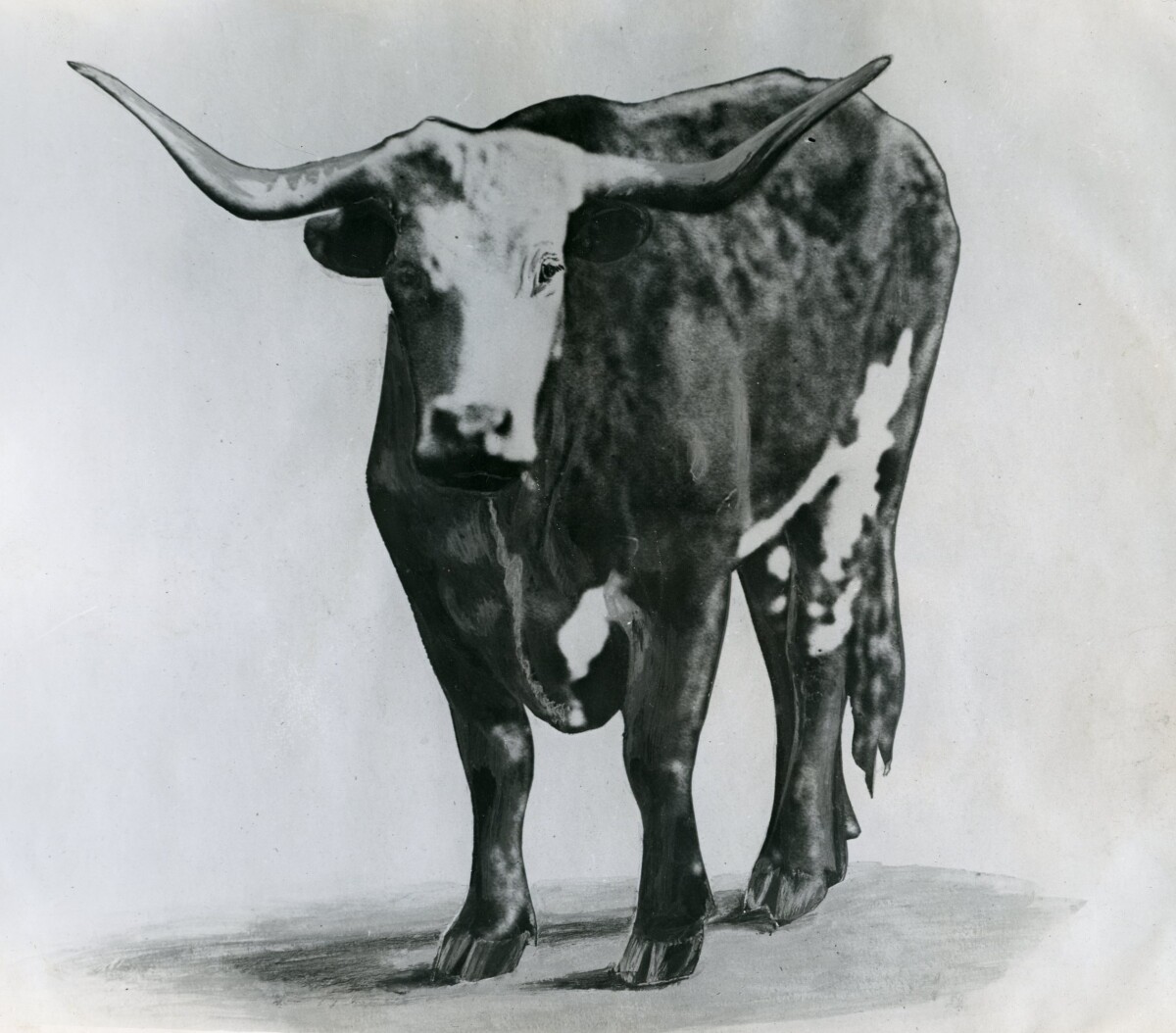Mexican Longhorn

Mexican Longhorn
Longhorns have been called the most intelligent breed of cattle. As a holdover of their experience in the wilderness they are independent, observant and cautious and can be quite fierce. This gives them a reputation as being difficult to work with, but Longhorns just need a different approach. Working Longhorns requires patience and calm. Once you've raised Longhorns, you won't want to go back to Angus and Herefords again. Longhorns don't graze only the best grass, but will scrounge for feed other breeds wouldn't consider. They will browse on willows and other trees, and will even eat poison oak and prickly pear cactus if feed is in short supply. They will thrive on land where other cattle can't even climb. 400 years of natural selective breeding by "survival of the fittest," without the intervention of man, produced mighty bulls and cows of exceptional strength and endurance. They developed flat ribs and narrow hips and flexible pelvic structure that gave these cattle a casual gait requiring minimal effort. So equipped by nature, they could walk great distances in search of feed and water without tiring. They could calve easily and often, and over time became a very different breed of cattle ideally suited to the arid American West. They developed a level of stamina which would allow them to be driven hundreds of miles to market and that would influence the history of the United States. By 1860 the unbranded and untamed Longhorn numbered ten million. Early Texas settlers were surprised to find what they thought were native cattle "wild as deer and more dangerous than a grizzly." Unlike vast herds of buffalo (American Bison) that blackened the plains, these skittish wild cattle traveled across Texas in small groups, hiding in side_longhornbeef bottoms by day and grazing only at night. The word mustang was anglicized from mestenas, meaning strays. The meanest bulls were called cimarrones.